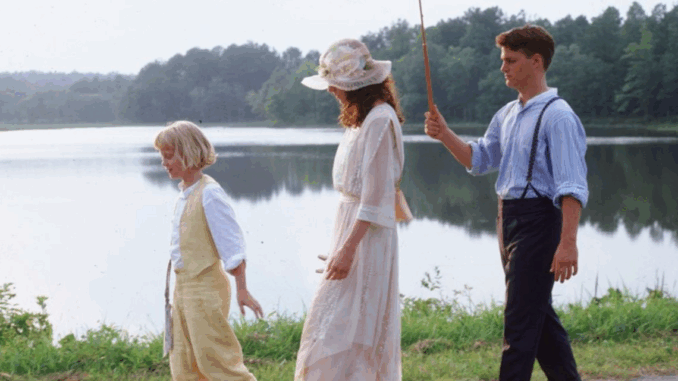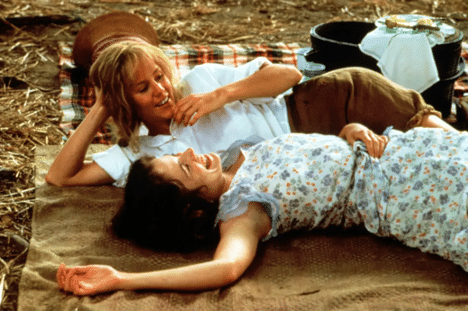
Have you ever watched the film Fried Green Tomatoes and found yourself wondering: “Did this really happen?” The story of Idgie, Ruth, the Whistle Stop Café, the train tracks and the disappearing husband—all of it feels so richly detailed that it seems real. But here’s the scoop: the movie isn’t based on actual events in a straightforward way. However, it draws on real-life inspirations and historical touches that give it that authentic feel. So let’s peel back the layers, explore what’s fact, what’s fiction, and why it matters.
What the Film (and Book) Present
The film, released in 1991, is adapted from the 1987 novel Fried Green Tomatoes at the Whistle Stop Café by Fannie Flagg. The narrative toggles between the 1920s–30s in a small Alabama town, and the 1980s life of Evelyn, a housewife who meets Ninny in a nursing home. Through the flashbacks we meet Idgie Threadgoode and Ruth Jamison, whose lives intertwine in surprising ways. In short: the setting, characters and story are works of fiction.
Clear Statement: It’s Not Based on One True Story
If you’re looking for exact historical accuracy—that “this really happened” label—then no: the story is fictional. The novel and film are crafted for storytelling, not documentary. The author has indicated that while she drew on her Alabama upbringing, the characters, town, and major events are created for the sake of the tale.

Why It Feels So Real
Why does the story feel real then? There are several reasons:
-
The setting is vivid and rooted in Southern-life detail—small town, railroads, cafés, dinner-tables.
-
The themes reflect real struggles: women’s friendship, family, racial tension, economic decline.
-
Real landmarks inspired the fiction: for example, the café draw was influenced by real cafés in Alabama.
Real-Life Inspiration: Whistle Stop & Irondale Café
One real café often mentioned is the Irondale Café in Irondale, Alabama. While the Whistle Stop Café in the story is fictional, this real spot had a legacy that inspired parts of the setting. So although Idgie and Ruth didn’t really run the Whistle Stop Café, the ambiance, the friendly misfits, the food, the train whistles—all echo real places.
Fannie Flagg’s Own Words
The author grew up in Alabama and has spoken about how her childhood, family stories, and Southern culture informed the novel. But she has not claimed that Idgie and Ruth’s story was a literal retelling of people she knew. Instead, she used those memories to build a fictional world that resonates.
Elements of Fictional Justice and Drama
The plot contains dramatic events: murders, disappearances, secret barbecues, train-wrecks, community conspiracies. These make for great storytelling, but they push the story into the realm of fiction, not verifiable history. If you look for documented records of a woman eating her husband’s barbeque, you won’t find it.
Historical Context vs. Storytelling License
The story takes place in a time and place—Deep South, 1920s-30s, racial segregation, railroad towns—that is historically accurate in broad strokes. But specific events are not tied to real records. Think of it as historical fiction: the world is real, but the people and events are invented or dramatized.
Why That Matters for the Viewer
Knowing that the story is fiction doesn’t make it any less powerful. In fact, it allows us to appreciate how well the story captures emotions, culture, and atmosphere. It also frees us from expecting strict historical accuracy, letting us enjoy the themes of friendship, resilience, identity and change.
How the Film Adaptation Changed Things
When the book became a film, some details were adjusted, characters streamlined, and certain sub-texts (especially around sexuality, race and gender) softened or altered. While that happens with most adaptations, it’s good to remember the film is a film, not a documentary.
What Are the “True” Elements?
-
The setting of the South, small railway town, café life—these are based loosely on real templates.
-
Some characters may be composites of people the author encountered.
-
The sense of community, of outsiders supporting each other, of economic decline tied to the railroad—real themes drawn from the era.
What Are the Fictional Elements?
-
The central characters Idgie and Ruth, and their specific life story.
-
The murder/disappearance of Ruth’s husband and the café’s secret sauce back-story.
-
A large part of the narrative universe is outright invented for moral and emotional effect.
Why People Still Believe It’s Real
Because the film immerses you so completely. The dialogue, the color of the setting, the authentic accents, the aged-town look, the sense of lived-in history—it all creates “verisimilitude.” When something feels real, our brains often skip the question of „is it real?“ That’s a mark of strong storytelling.
Comparative Example: Fiction Based on Reality
Think of other films: they use real settings but fictional characters. Fried Green Tomatoes falls into that category. It’s not pretending to be a true-crime film, but it captures truth in emotion and place rather than in literal events.
Impact on Audiences Because of This Ambiguity
The ambiguity helps: viewers bring their own stories, interpret Idgie and Ruth’s relationship in different ways, feel the “secret’s in the sauce” line as metaphor. Because it isn’t pinned down to a true event, it opens up conversation about race, gender, love, friendship, and purpose.
Should You Watch It as “Based on True Events”?
You can, with the understanding that it uses the feeling of truth rather than factual accuracy. Enjoy it for its atmosphere, its emotion, its characters—and know you’re watching a story crafted to feel real, not a documentary.
Final Takeaway
So, to answer the central question: No, Fried Green Tomatoes is not a true story in the sense of a documented real-life account. Yes, it is rooted in real places, real moods, real Southern life. The combination of authenticity and creative invention gives it its power. The magic of the film and book lies in how it uses fiction to speak true.
Conclusion
In the end, Fried Green Tomatoes thrives because it balances on that line between reality and fiction. It invites you into a world that could have been real, filled with people you might have met, in a town you could visit. And even though the major events are imagined, the emotions aren’t—they resonate because they are deeply human. So don’t sweat the “based on a true story” label too much. Instead, sit back, let the story wash over you, and appreciate the craft that made something fictional feel as vital as life itself.
FAQs
Q1: Was the Whistle Stop Café a real place?
No, the Whistle Stop Café is fictional. However, a real café called Irondale Café in Alabama helped inspire its feel and setting.
Q2: Did the author base Idgie and Ruth on actual people?
Not directly. The author drew on her experiences and people she knew, but the characters themselves are inventions for the story.
Q3: Are the dramatic events—like murder and disappearance—based on real cases?
No documented case matches the story exactly. The events serve narrative and thematic purposes rather than historical record.
Q4: Why does the story incorporate so many real historical details?
Because grounding fiction in reality makes it richer. The author wanted to capture the essence of a time and place—the small-town South, the railroad era, racial and gender tensions—and she did that through fictional characters.
Q5: Does knowing it’s fiction lessen the story?
Not at all—in fact, it can enhance the experience. When you know a story is crafted, you can appreciate the creative choices, the emotional truth, and the themes more deeply.
